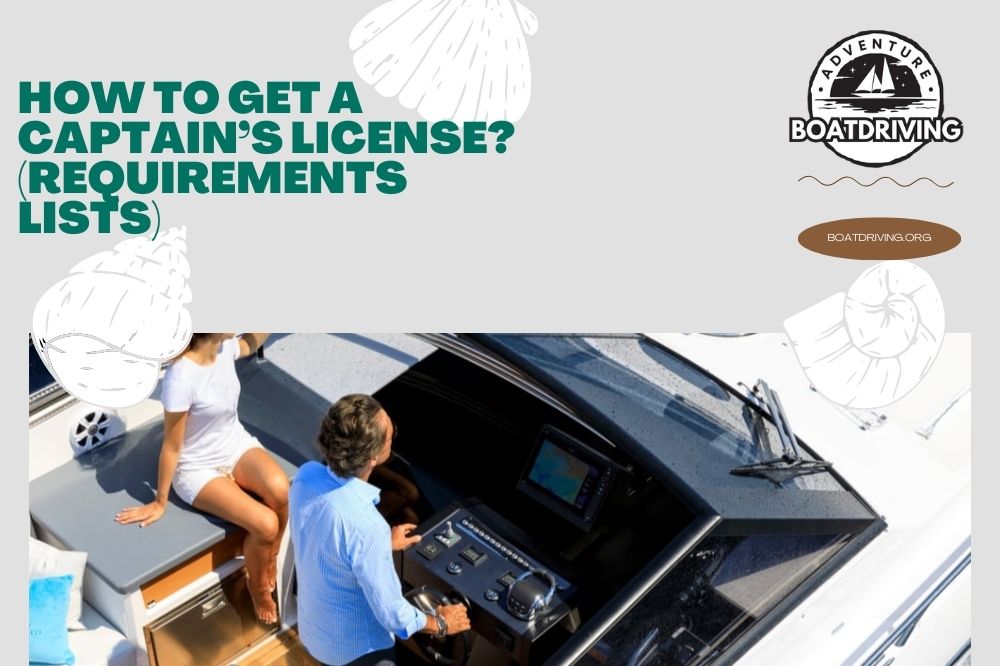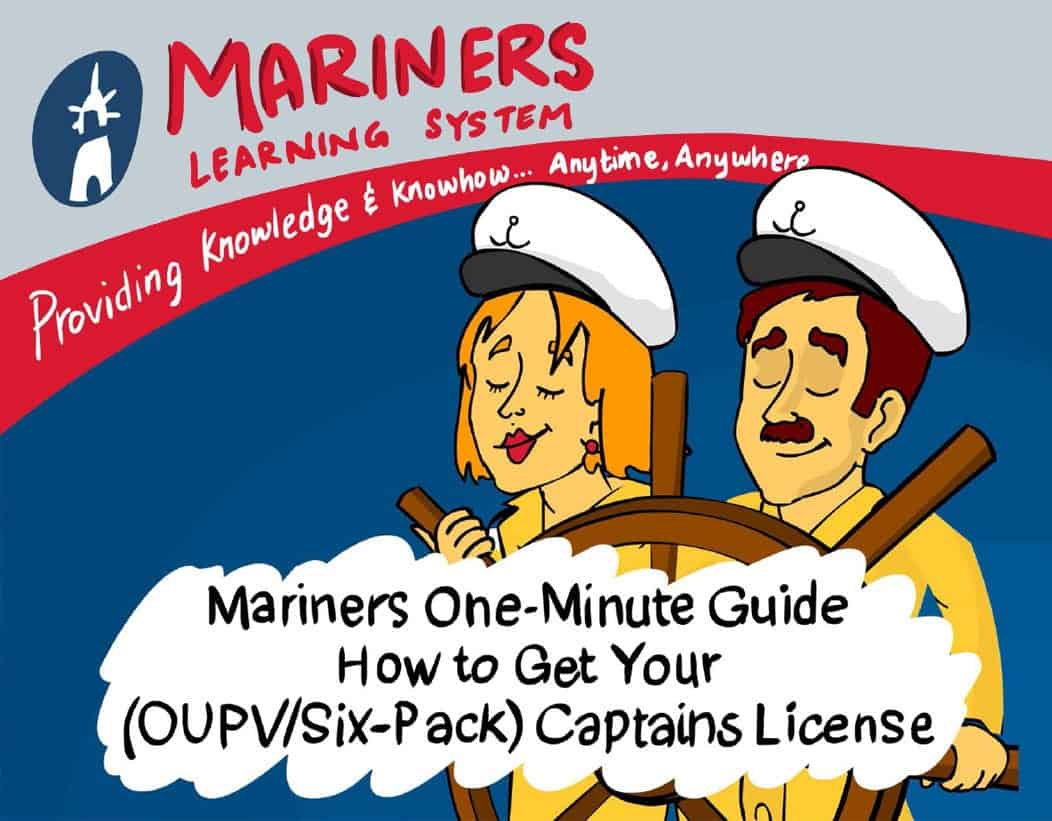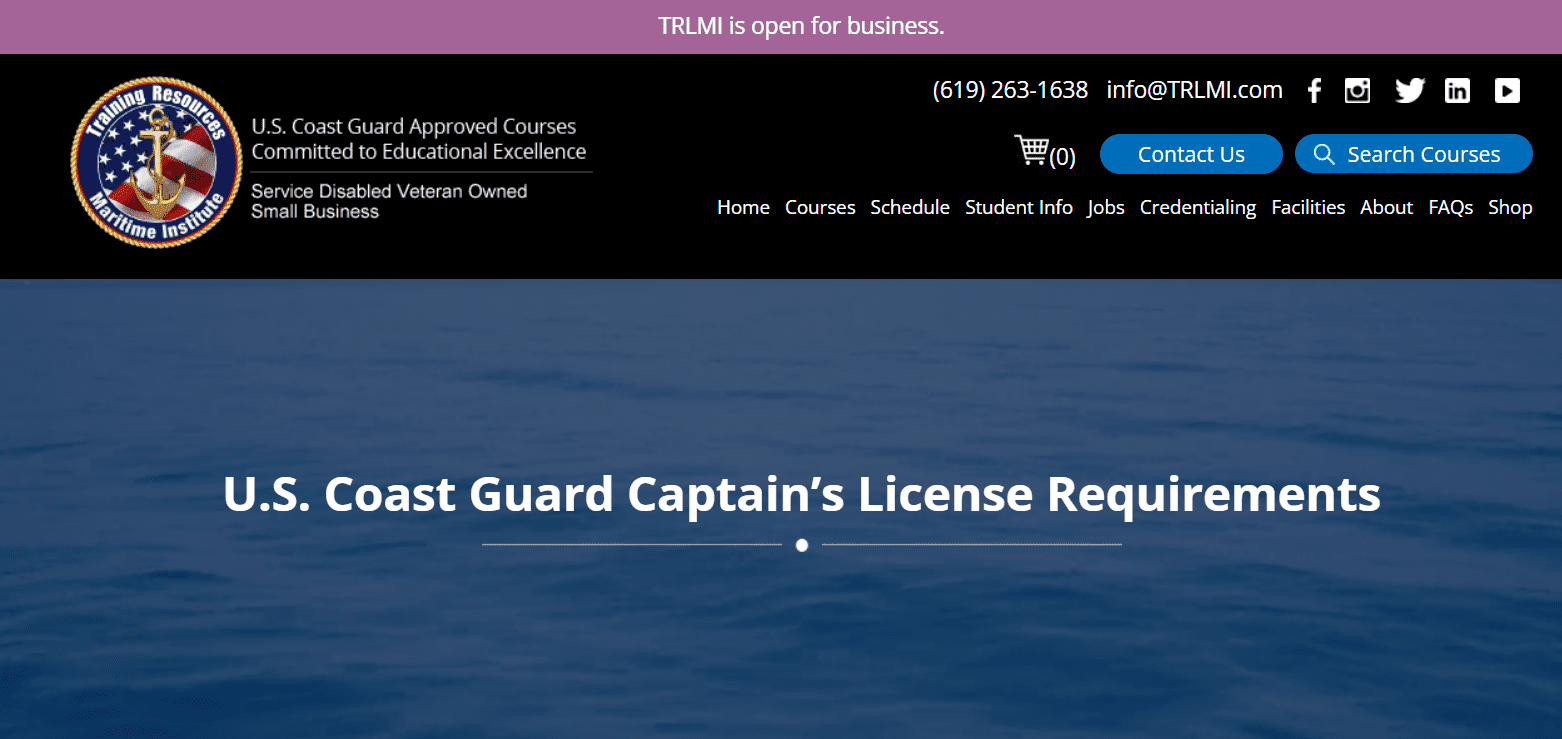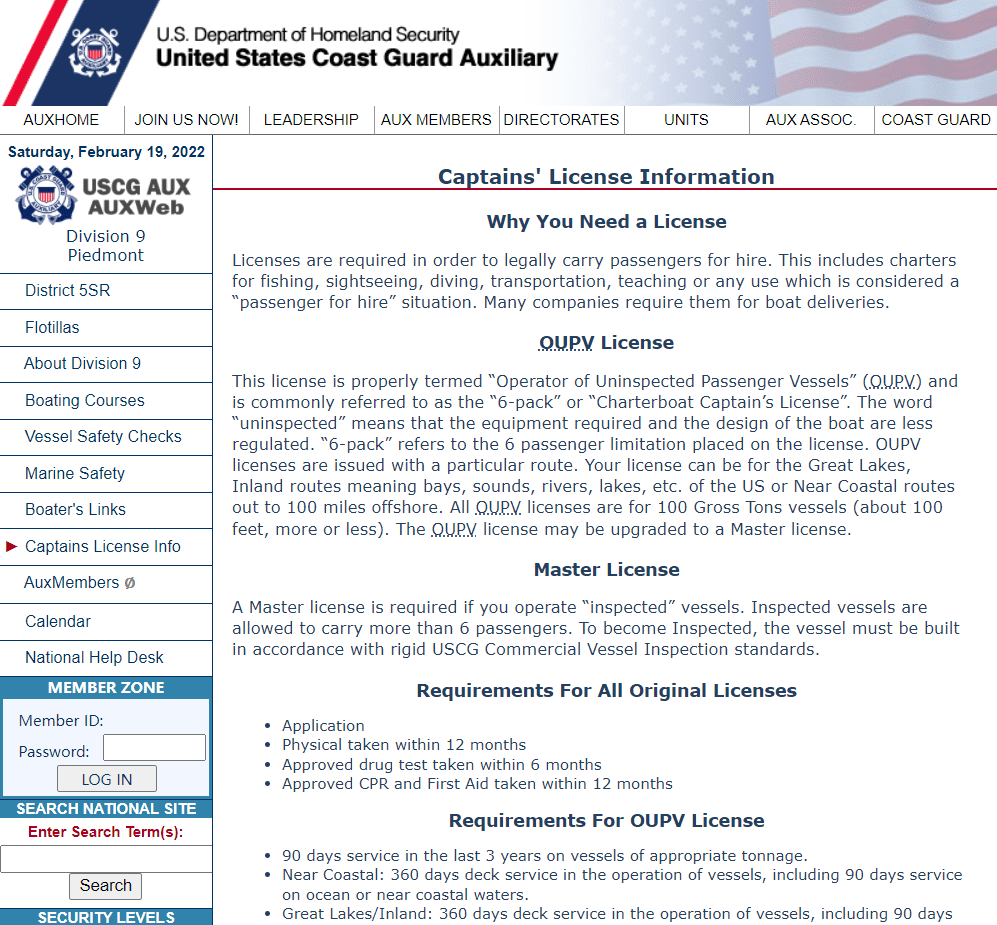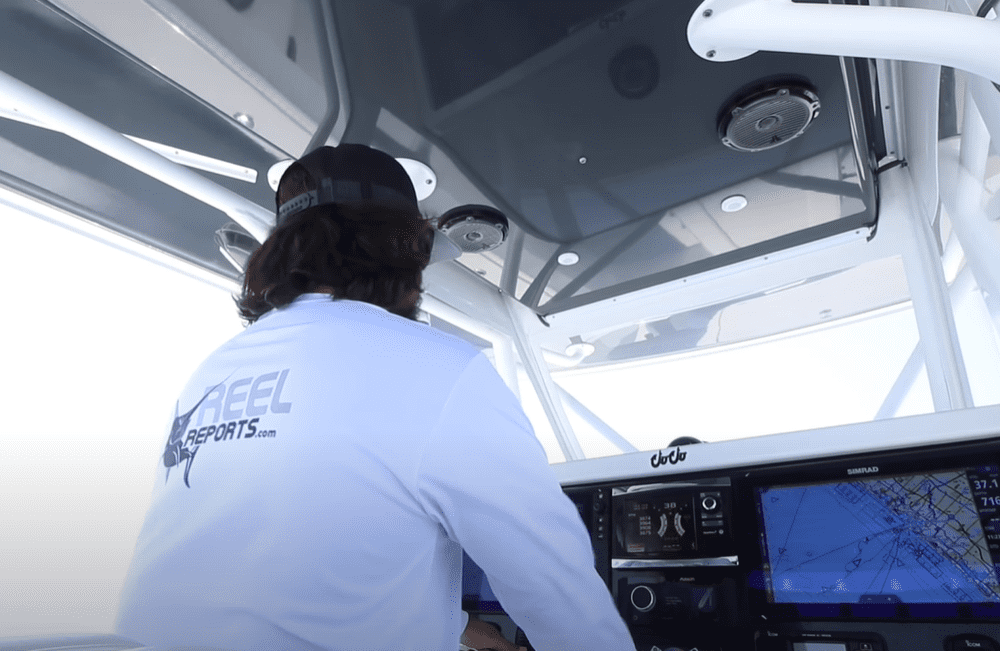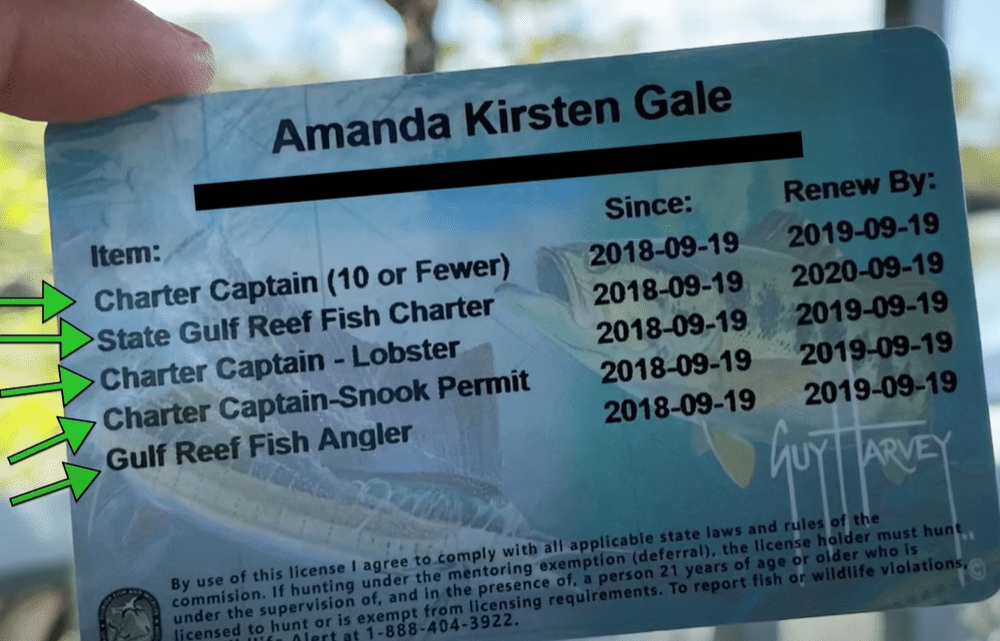Are you thinking about getting a captain’s license?
Does the idea of being recognized as a professional merchant mariner excite you?
Becoming a licensed boat captain can open up amazing opportunities, including career growth, travel, and networking.
There are a couple of requirements to get a captain’s license. But, with some effort and time, you will finally achieve your dream of joining the merchant mariner professionals.
In this article, I will explain everything you need to know about how to get a captain’s license. You will find out the benefits of applying for this license, the requirements, and the types of captain licenses.
In the end, you will know exactly what to do to get a captain’s license so you can start your career as a professional merchant mariner.
Let’s get started!
Table of Contents
What Is A Captain’s License?
A captain’s license is a credential and document showing that you are legally and professionally qualified to operate a civilian water vessel carrying passengers and cargo.
The United States Coast Guard (USCG) requires anyone paid to operate waterborne vessels such as a boat, dredge, ferry etc., to obtain licensure.
There are three types of licenses you can obtain, depending on your level of experience, where you will operate the boat and the boat’s tonnage.
Before we talk about the requirements to get a captain’s license, let’s take a look at each of the three different licenses.
Types of Captain’s Licenses
To become a professional merchant mariner, you will need to apply for one of these licenses:
1. The Operator of Uninspected Passenger Vehicles
The Operator of Uninspected Passenger Vessels (OUPV), also known as a 6-pack, is a license that allows you to operate an uninspected vehicle and to carry a maximum of six passengers.
When a boat is categorized as uninspected, you can operate it without the USCG inspecting it. Also, requirements like the boat’s tonnage aren’t as stringent.
To obtain a six-pack license, you will need at least 360 days spent working in the boat out in the waters. Ninety of these days must be spent near coastal, great lakes and inland, or inland, depending on the area you want to operate.
For example, if you want to operate in the great lakes and inland service area, you will need a Great Lakes and Inland service OUPV.
2. Master Near Coastal
When you apply for a Master Near Coastal License, you can operate uninspected and inspected boats near coastal and inland waters. Near coastal waters are an estimated 200 miles off the U.S. coast.
To qualify for this license, you must have a cumulative experience of 720 days spent out in the sea. Up to 360 of these days must be spent out in the ocean.
3. Master Inland License
With the Master Inland License, you can operate an uninspected and inspected boat within your specific area of inland waters. Inland waters typically include lakes, rivers, harbors.
To obtain this license, you need at least 360 days of sea time on any water body. You will also need 90 days’ experience out in the Great Lakes if you want to operate in these waters as well.
The Master Inland License also allows you to work on vessels operating near-coastal areas. For this, you need at least 180 days’ worth of experience spent out in the ocean.
Next, you might be wondering about the advantages of getting a captain’s license. Can’t anyone with experience and know-how operate a boat?
It is true, with some experience, you can operate a boat. But, a license opens up many more opportunities that you would miss out on if you didn’t have the credentials.
You will also need to consider the license tonnage when deciding the type of license for which to apply.
The tonnage of license allows you to operate a vessel of a certain weight. For example, for a 100-ton license, you will need experience of 360 days on a waterborne vessel weighing at least 34 gross tons or 180 days spent on a vessel weighing at least 51 gross tons.
To obtain a 50-ton license, you will need at least 180 days in a boat weighing more than 26 tons; this applies to people who began their service at sea after March 2014. For those who began their service before this time, you will only need a day’s experience in a boat weighing more than five gross tons.
If you do not qualify for the 50-ton requirements, you will be eligible for the 25-ton license.
Benefits of Getting A Captain’s License
This section will look at the benefits of applying for a boat captain’s license.
Career opportunities
Whether you are looking to work full-time or part-time as a captain, getting a license from a USCG-approved institution is one of the best ways to access exciting job opportunities. A licensed charter boat captain can earn between $60,000 to $100,000 a year, and this doesn’t include other perks like free food and, obviously, free travel to amazing destinations all over the world.
Free travel
If you have always dreamed of traveling the world and you love the waters, getting a captain’s license can be the start of making your dreams come true. With a captain’s license, you can travel far and wide with everyone looking up to you as you navigate the great waters of the world. The best part is that you get to see all these beautiful places for free.
Networking
Traveling is an excellent way to meet new people. Getting a captain’s license allows you to access jobs in superyachts, medium-sized ships, and large boats. Whether you are taking people out on fishing excursions or ferrying tourists, you will have the chance to meet and interact with new people. You never know who you meet and how they can change your life.
Flexibility
Most people would love a flexible job! Yet, the truth is, these jobs don’t come easily. But, a flexible work schedule can be a reality when you become a licensed captain. If you decide to make this your full-time job, you will find yourself working for several weeks straight and then have a couple of weeks off to relax and do other things in your free time. If the 9 to 5 schedule doesn’t appeal to you, working onboard a boat as a captain might be a great career choice.
How To Get A Captain’s License
As we have seen, a captain’s license opens up a world of exciting opportunities and makes you a proud professional in the merchant marine industry.
We will now go over the requirements for getting a captain’s license.
Step 1. Obtain boating experience
To become a captain and obtain a license, you first need to accumulate the necessary experience. Your experience on the water doesn’t have to be as a paid crew member, and you can even count time spent on your vessel toward your cumulative boating experience.
There should be no problem as long as you can document and show proof of your time onboard a waterborne vessel. If you start working on someone else’s boat, you will likely need to work your way up from a deckhand and crew member before becoming a captain.
Step 2. Enroll in a USCG-approved maritime school
As you accumulate boating experience, it is a smart idea to take a captain’s license course from a USCG-approved maritime school. The school will impact great theoretical knowledge about waterborne vessels and the maritime industry in general. Most importantly, the school will give you study tools and coach you to pass the USCG exams. You must pass your USCG-approved examination as one of the requirements for getting a captain’s license.
Step 3. Submit your application package
When you complete your course, the next step will be to submit your application for a captain’s license to the Coast Guard. You will fill out a couple of forms and pay certain fees when applying for your license.
To ensure that you do not miss out on recent updates, it is always best to double-check with the USCG that you have fulfilled all the requirements before submitting your package.
As of date, here is a list of the forms and items you will need to complete your application:
- Sea service forms
As part of the application process, you must prove your time spent out in the sea. You can count your service starting from age 16 to your time of applying for the license. Overall, you must show at least 90 days of sea service in the last three years. If you worked on another person’s vessel, they would need to affirm your time. In addition to the experience, you must also meet all other requirements to obtain the specific license you want.
- USCG course certificate of completion
Once you complete the course and pass the examination, your maritime school will issue you a completion certificate. This certificate is valid for one year and shows proof of your attendance at a USCG-approved maritime training institution.
- Transportation worker ID card
You will also need a Transportation Worker ID card (TWIC) from the Transportation Security Administration. You must pass a government-issued background check and pay the requisite fee to obtain your TWIC. Apply for your card at the TWIC website.
- Drug Screening
Before obtaining your license, you must prove your enrollment in a random drug screening program. Passing your drugs test is a requisite for getting a captain’s license.
- Medical exam
A physical medical checkup is also part of the requirements for qualifying for a license. You must pass specific examinations before the Coast Guard can issue you a license. Take this physical seriously; some doctors may miss critical aspects of the examination, causing the USCG to reject your application. It is strongly recommended that you work with a physician familiar with the USCG medical examinations requirements.
- Merchant Mariner Credential Form
The merchant mariner credential is a document showing your credentials and qualifications. This is basically your captain’s license. Be sure to provide accurate information and specify the type of license and tonnage you are applying for.
- Proof of Residency
You must be a legal resident of the United States of America to apply and obtain an OUPV license. As part of your application, provide a copy of your ID or green card as proof of residency.
- Photo ID
The photo on your TWIC will serve the purpose of a photo ID, so you don’t need to send in an additional passport photo. This photo will appear on your license; ensure it follows the USCG guidelines and standards.
- First Aid and CPR Certificate
When applying for an original mariner license, you must pass a first aid and CPR-certified course. Courses are easily accessible locally and can be completed in a day.
- Proof of Application Fees
Check with the USCG website the fees you should pay for your particular type of captain’s license. Then, head over to pay.gov to complete the payment process. If possible, print and keep the payment confirmation message.
- USCG Oath
Finally, you must take a mandatory USCG oath. You can do this at your maritime training school or a Coast Guard center.
Finally, submit all your supporting documents and forms to your local, regional exam center. It is easier and faster to email your application package. The USCG will evaluate your application and issue your license in one to three months.
Summary: How to Get A Captain’s License
Getting a captain’s license can be quite a process. But, like everything else, nothing good comes easily. Obtaining your license is one of the best decisions you will make, especially if you are looking to expand your career opportunities or be recognized as a professional charter boat captain. The best part is that if you already have experience, this can count toward your sea service requirements, helping you get your captain license faster.
